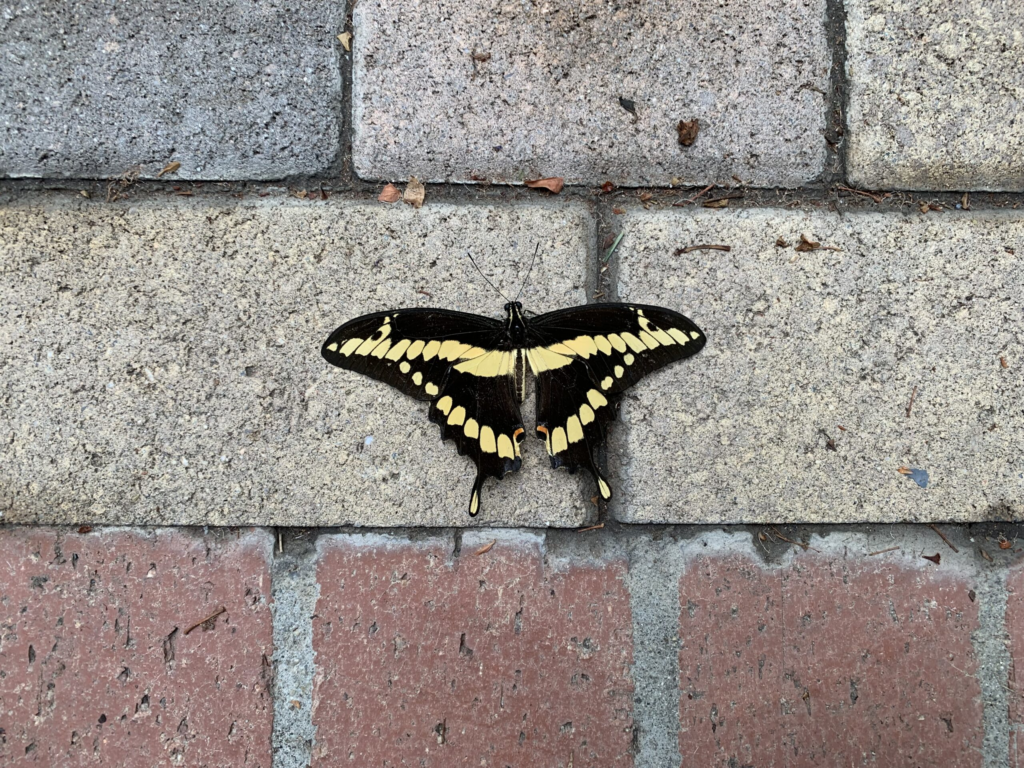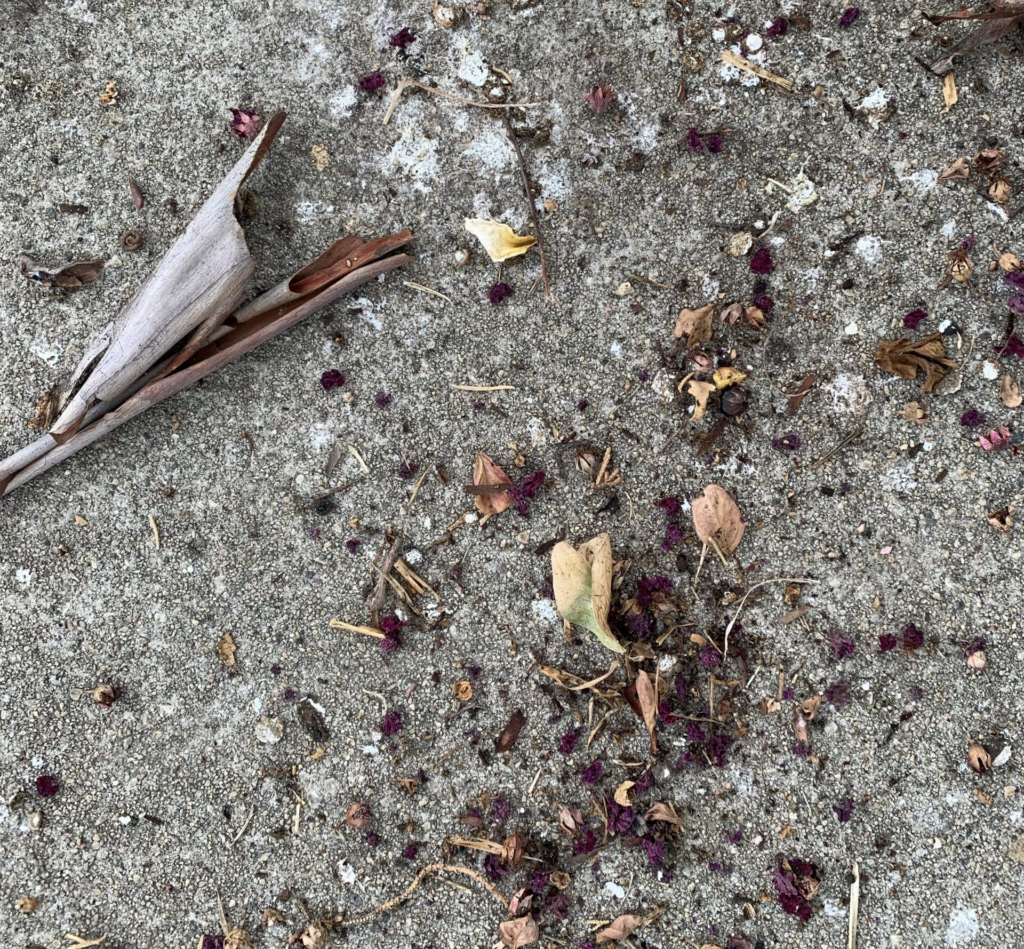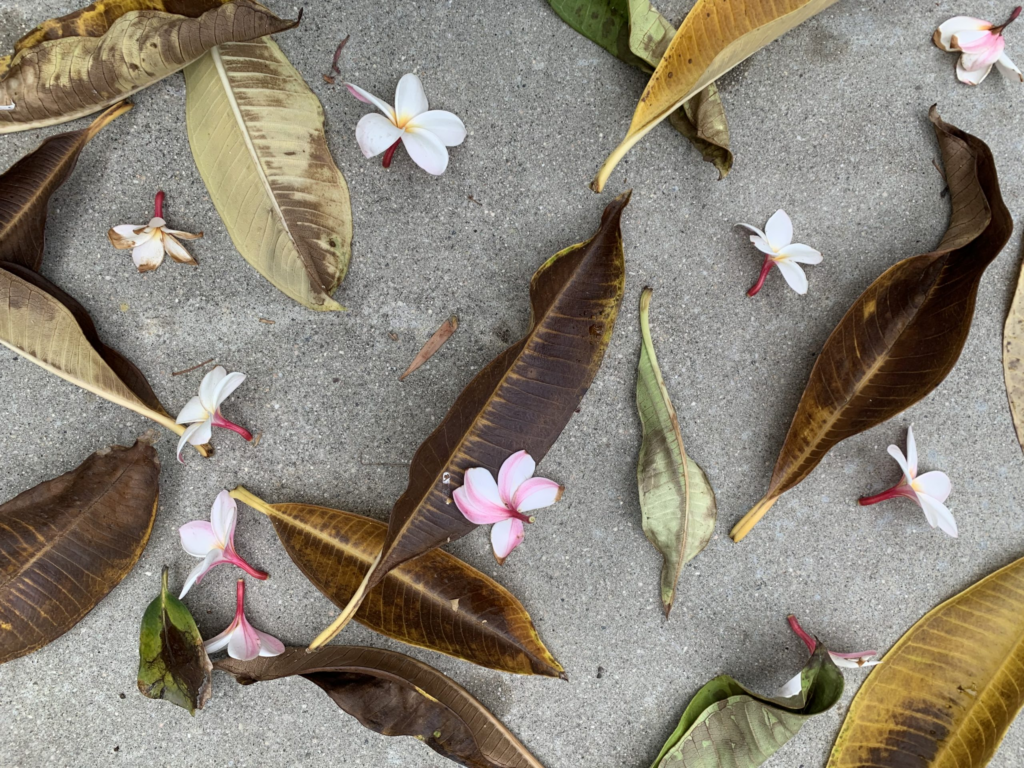An Autumn Sonata – With Written Adagio Musings in Three Movements
A sonata is a musical form generally composed of three or four different movements in contrasting musical styles and keys of music. The movements traditionally include a fast-opening movement, a slow second movement – an adagio – a dance-like third movement, and a fast finale. Adagio is the Italian word for “at ease” and indicates the music is to be performed with a slower and more gracefully tempo.
The second movement of Vladamir Rachmaninoff’s Piano Concerto No. 2 in C Minor is an example of an adagio sostenuto – prolonged notes and a sense of a lingering of the melody – so appropriate to me it seems, while my eyes linger upon trees in the full colors of the fall, the slowly spinning falling leaves, and those already on the ground, breathing their peaceful last fading notes of an autumn song into a gentle yet steady breeze whispering of the colder winds still to come.
The following written pieces to me are all adagios in tone – slow without rushing, lingering in careful thought and tone over each subject – a written adagio, similar perhaps to a Rachmaninoff adagio, but, of course, in my work, far outside the genius of Rachmaninoff’s music.
***

I do not know my butterflies, except perhaps the monarch, of which it seems we used to have many more than now migrating through Los Angeles to Mexico. Or perhaps in years past, we only saw those moving through the Valley who had just lost their way, or became disoriented then alone, isolated from the rest, a phenomenon shared by a certain percentage of those who are new in LA pursuing dreams or running from issues of life, or both.
I used to believe the butterfly of this photo was a Tiger Butterfly, as that’s what I’ve always known them as, but after a short internet search, I was able to identify this butterfly as a Western Giant Swallowtail. This search for truth did not take long at all.
However, the exact name of this butterfly is not central to this song, but what is central is that when its energy and life was spent, it came to rest with its wings spread, as if still in flight, upon the pavers of my back yard. These butterflies appear, just a few, each year and they are a delight, as are all butterflies in my garden, as these butterflies are one of the larger ones to fly within and honor my garden, and here in this photo, gracing my garden in its final full display of beauty.
I am soon going to have a tree and garden service come in and dig out a few small tree and rose stumps and perform the now annual trimming of my entire garden – much too much work for me now – and I must avoid ladders.
Then, I am planning in the spring to plant more shrubs and herbs that attract butterflies and bees, and hummingbirds, for ecology purposes, that is true, but also in my mind, I’m giving in to my English roots, my Beatrice Potter and Wind in the Willows roots, creating a space of life and busyness, a place of harmony, and of the peace and the flourishing life of a somewhat English garden in theory, that will be just slightly overgrown.
For it was within a green well-watered garden that God pulled the atoms and water molecules from the soil – the dirt – to fashion the DNA and flesh of our bodies when He created us in His image and likeness, and where we were originally placed to live in and thrive.
And though just as my written adagios cannot be compared to the musical genius of an adagio by Rachmaninoff, so my little suburban garden in the San Fernando Valley is totally nothing compared to the garden planted by God, but it will hopefully be a pleasant if very distant and limited echo of Eden, offering peace and rest to some, even with the not so distant freeway noise adding a certain modern LA ambience to the less than a tenth of an acre of the green patch of my garden.
I am mulling over having an open type of fence built to separate and mark off the garden from the expanse of the concrete of the backyard driveway. My garden has always functioned for me as a chapel of sorts for my soul, and with a defining fence, it may seem more that way also for those who are invited to spend time with us, to find rest, and converse, and commune with me and others within the various spaces of the garden. Thus, my plans for a place of peace. Plans for others. Plans for a place to be quietly centered in the now, with my heart and soul upon the horizon of eternity.
Too ambitious and lofty a goal for suburban Los Angeles? Especially down in the San Fernando Valley of all places? Perhaps, but at least it will be green, and the sound of the busy nearby freeway lessened. A fence of wood, or even plastic, with a few open gates, will, at least, help make the plans move ahead. I find it best to work with what I have and know.
Now I also have to admit that my garden also expresses the California half of my soul. For the first gardens I knew as a baby and a young boy were the gardens of the San Fernando Mission, only a few miles from where I was born and the Catholic church we attended and where I was baptized as a baby. The public Mission Garden became a favorite place to visit for my mom, especially after mass on a beautiful Sunday morning, of which there were many, a willing stop for my father as he knew, and I eventually came to understand, that he did it for my mom, as she was so used to the many gardens of London which along with her parents, she terribly missed.
And this California half of my soul was expanded and nurtured by our many visits as a family to the other California Missions, the beautiful Mission Santa Barbara and the nearby botanical gardens being the most frequented. And it was the quietness of those gardens that I loved and remember most. For the gardens were peaceful, an oasis of green coaxed into life with precious water – there being no other type of water in Southern California – from an otherwise bone-dry soil, with the gentle splashing of the large central fountain singing of life and the joy of being, and carrying within its sound, it seemed to me, the very essence of quietness and timelessness, when I was young.
Then with my small hands, once I figured how to reach the water, I swirled the waters of the fountains with my fingers, at times seeing my face and clouds above reflected in the moving water not as exact images, but rather to my child’s mind just as ideas or glimmers of what my young world was – one of beauty all around me alive and moving, and my face, myself, in the center of it all, my fingers participating in the living, gentle movement of the water. I’ve always loved fountains, their sound, and the depth of meaning and awareness they created within me even when I was small.
Now returning to the butterfly, I didn’t mourn its demise, for I had enjoyed its winged song as it flew and flittered from plant to flower and all around the color and green of my garden. It had lived its season joyfully with purpose and strength, and in the stillness of its passing, it gave me a lasting soul gift by spreading its wings and descending to the pavers of the garden and laying upon them with the final resting of its wings, where I would encounter it still brilliant and bold, only the beauty and power of its flight now departed, its purpose now complete.
I then thought of how I would want my life to be as such, and my passing similar – living with purpose and life, providing beauty and delight and thought to others while still within a body that eventually may become delicate and frail, but hopefully at my end, at least some will say, that I left them something of grace and peace and hope. Yes, how beautiful is this autumn sonata of the butterfly, be it once thought of as a Tiger Butterfly, or is in fact a Western Giant Swallowtail, or even something entirely other.
***

In this photo, the autumn debris of a crêpe myrtle tree has fallen among the droppings of the various birds – sparrows, the two blue jays that have decided to grace my home with their presence and joyful consistent screech, hummingbirds, and mockingbirds – that have rested in and sheltered from the summer sun in the branches that have grown over the sidewalk.
In this photo, taken in the autumn, there is a rising adagio of sadness and stillness of heart echoing within, since the spring – a singing of the song never heard from the nestling I found months ago on the sidewalk not that far from my home, on one of my walks. It was a sad view, for here was a baby bird which no longer had life, nor would it ever lift its voice in song, and it would not discover the wonder of lifting its wings and flying into the sunlit blue sky – a gift to birds, the eternal envy of every human, and the source of a rising joy in our hearts, as we see even just one feathered creature take flight.
When I found the baby bird, good-sized but still featherless, upon the hard concrete of the sidewalk, I took a photo of this sorrow, always knowing I would write of this nestling, but also knowing I would make the artistic decision not to place the bird’s image within the posting, as I hesitated with concern that readers would turn away – as I probably would. So now, I speak of the nestling in this autumn sonata, giving voice and flight in the autumn, to the nestling and its song never heard in the spring, and its wings never raised for the great adventure of flying. I still mourn this little bird.
***

In this photo, I collected the various scattered fallen autumn leaves and flowers from the plumeria planted in the backyard, a gift from Hawaii from one of my daughters, initially just an eight-inch cutting, but now tall and soaring overhead by the patio. I then dropped the leaves and flowers on the concrete pathway, one by one. After looking at my artistic endeavor for a moment, I decided to move the plumeria litter around, arranging and rearranging them, leaf by leaf, fallen flower by flower – creating art – and with every move or rearrangement, thoughts of how to use them as a movement in this autumn sonata began to form and gather life and structure within my mind.
I would have preferred a photo of the litter in its natural state, but there was none, as my wife had swept the concrete a day or so before, so I had to construct my own “casually” littered scene, which to me, I confess, always looked constructed and therefore not as beautiful nor as true as that which was swept away, but very needful for this third adagio movement.
The perfumed flowers of the plumeria are fashioned in Hawaii into fragrant leis, many times placed as a welcoming wreath around the neck of visitors. And here in Southern California, and in my garden, the plumeria thrives and can flourish tall and wide and take over extensive space with almost no care.
My plumeria is deciduous – not all plumerias are deciduous, but here in the Valley in the late fall, most seem to lose their long substantial leaves. Then in spring the big, long leaves grow back, but the flowers do not bloom, at least in my garden, until mid-summer has passed it seems, and then both the leaves and the flowers last well into mid-autumn – so their profuse flowering is late but lingers past summer until the beginning of the coolness of our later autumn days. Then the leaves and remaining flowers begin to drop, and the bloom season here comes to an end, and all the flowers and leaves fall to the ground.
So, for me, the autumn adagio of the plumeria is a reminder of how late the season of its blooming can be, and of how long it will be until the fragrant flowers appear again. This song for me has a tinge of sadness to it, yes, a lingering echo of how it is, or was, to only see or be with a dear friend for only a short time each year. For when that time ended, a winter within the soul set in until they appeared again.
And for those never to again appear beside us, then a new spring built of memories of the kaleidoscope of the light and love that played upon their faces, and the thoughts filled with grace from their lips – not the actual words remembered but the benediction – the “good speak” – of their soul – will wash over us to comfort and encourage us as a lasting presence. Of such is the autumn adagio of the plumeria.
***
To hear, Rachmaninoff: Piano Concerto No. 2 in C Minor, Op. 18 – II. Adagio sostenuto, by the Los Angeles Philharmonic, please use the link below.
Bing Videos
To view all posts in the Moments of Seeing & Occasional Pieces, please use the link below.
Moments of Seeing & Occasional Pieces – Writing In The Shade Of Trees
To View all Postings in Thoughts & Musings on Writing, please use the link below.
Thoughts & Musings On Writing – Writing In The Shade Of Trees


0 Comments